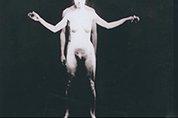Movie-lovers curious to get a glimpse of alternative depictions of sexuality in cinema are sure to enjoy “Radical Sex Education Films from San Francisco’s Multi-Media Resource Center,” a screening of 10 short movies playing at International House Jan. 30. The evening’s program is part of “Free to Love,” a five-week series examining the impact of the sexual revolution on film.
According to Herb Shellenberger, who curated the event, the MMRC was an arts organization run by Ted McIlvenna and Laird Sutton, two Methodist ministers who viewed human sexuality as central to their ministry. In the early 1970s, they began to produce, collect and distribute sex-education films. Sutton made many films himself, and his work is indicative of MMRC’s house style: straightforward depictions of sexual behavior shot in idyllic settings and accompanied by groovy music. The MMRC also included explorations of the body and sexuality made by experimental artists like lesbian filmmaker Barbara Hammer and gay director James Broughton.
Originally, these short films were intended to be shown to ministers, social workers and sex therapists. Between the mid-1970s and the early ’80s, they were screened in church basements, university classrooms and even prisons. But the movies are extremely rare and have seldom been seen since then.
Shellenberger views the MMRC as part of the larger social and cultural movements that swept America beginning in the late 1960s.
“The sexual revolution I see as a time when the emphasis was to give people their own agency over their sexuality, to explore themselves and their bodies and their sexuality in a way that was very fluid, open and honest,” he said. “And that’s what the people who started the MMRC encouraged. They thought that by showing people these films, they would be in touch with how other people were in touch with their own sexuality, in touch with their own sexual practice and hopefully encourage the viewers to be open and honest with themselves.”
That frank attitude extends to the subjects that the MMRC tackled, such as the relation of aging and disability to sexuality, topics that both Hollywood and the porn industry avoided. Its movies also differ from mainstream sex-education films in their naturalistic, nonjudgmental take on what is depicted as ordinary human behavior. Shellenberger identified Sutton’s “Rich and Judy” and Constance Beeson’s “Holding” as good examples of this approach.
“They’re what were referred to by the organization as ‘pattern’ films,” he said. “That means that the filmmakers chose their subjects — whether the subject was a single person or a couple or a group of people — and they said, ‘We’re going to film you. We’re going to try and be as unobtrusive as possible. You show us your sexual pattern, your sexual activity, as if we were not here.’”
The MMRC’s collection also included playful films, like Greg Von Buchau’s 1971 animated feature “Love Toad.” Using stop-motion technology, Von Buchau puts two frog-shaped beanbags through a cartoon Kama Sutra of sexual positions, all accompanied by the moans of Serge Gainsbourg and Jane Birkin’s salacious 1969 duet, “Je t’aime … moi non plus.”
The MMRC used humorous features to lighten the mood, and it’s easy to imagine that audiences appreciated the levity. What viewers made of the MMRC’s highly subjective films is anyone’s guess, but Shellenberger views this aspect of the organization as key to its radical nature.
“I think that the most interesting part of this organization is not only that they produced their own low-budget, quick, very-interesting films, but that they took films by independent artists — and often pretty experimental films at that — and placed them in this context of sex education, sex therapy, which is kind of a utilitarian use for these films, and I can’t really think of any other ways that that has been done before,” he said. In addition to the pleasure of sharing this work with other movie-lovers, Shellenberger hopes that the screening will help to rescue these artifacts of the sexual revolution from oblivion.
“A major part of what I hope to accomplish in screening films and programs, especially when they are rare films like these, is an act of film preservation,” he said. “There are films that maybe haven’t screened in 30 or 40 years. If you put them in the context of a current screening today, they’re going to be shown in a cinema to an audience, but not only that, they’re going to be placed in our program catalog, on our website. All these people’s names and the names of the films are now going to be on Google.”
Viewers can learn more by reading Shellenberger’s thoughtful essay on the MMRC, which is part of the catalog accompanying “Free to Love.” It comes with a DVD featuring three MMRC films.
For more information, visit www.ihousephilly.org/calendar.
